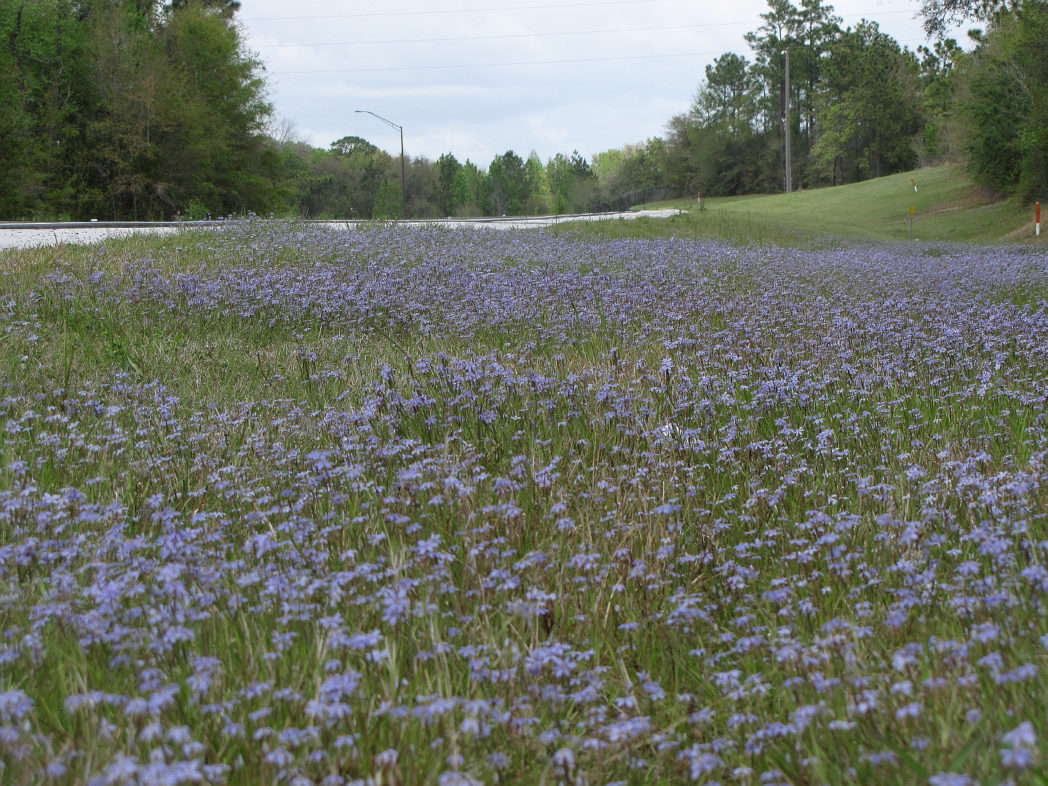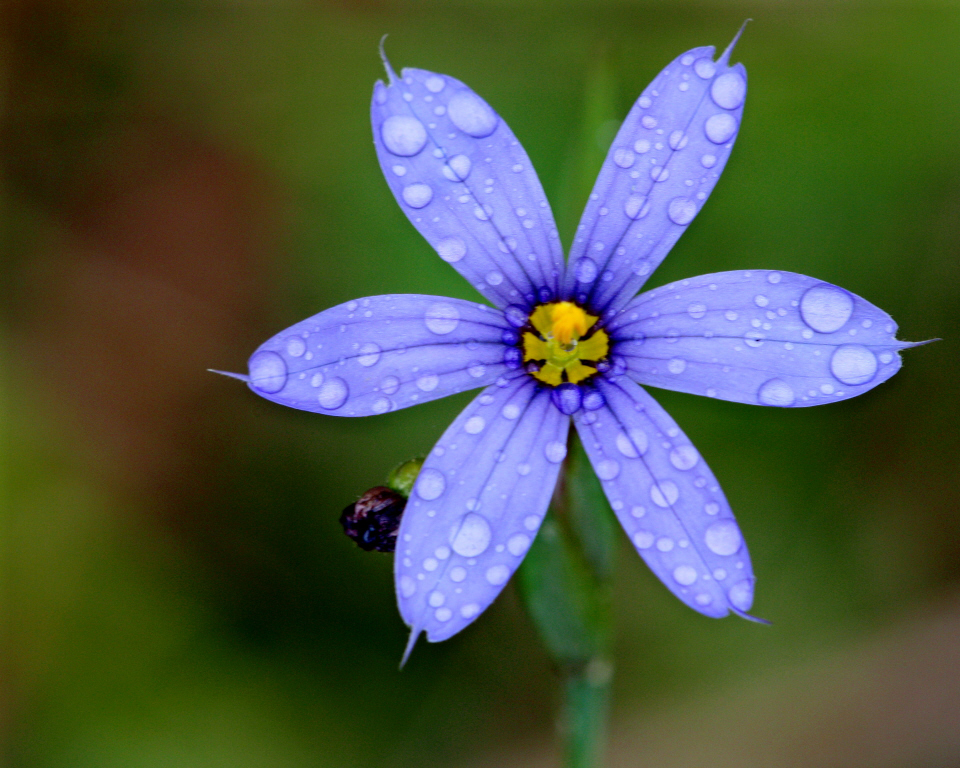Blue-eyed grass
Pictured above: Blue-eyed grass (Sisyrinchium angustifolium) by Mary Keim. Click on terms for botanical definitions. View post as a PDF.
Blue-eyed grass (Sisyrinchium angustifolium) is an evergreen, clump-forming wildflower. It occurs naturally in wet flatwoods, wet prairies and moist open habitats throughout Florida. Its dainty, star-shaped flowers bloom winter through summer. The flowers attract a variety of pollinators, including bumblebees, sweat bees, and other native bees and flies. Birds eat the seeds.

Blue-eyed grass flowers are born atop flat, grasslike stems. Tepals may be blue, purple or lavender, especially in photos. They darken as they near the center of the flower, which is bright yellow. They have obvious venation, are tipped with sharp points, and arch back toward the stem as the flower opens. Flowers generally open around noon in sunny conditions and close at the end of the day. Leaves are long, linear and basal. Seeds develop in capsules that wrinkle and turn dark brown as they mature.
The plant’s common name alludes to the grasslike appearance of both stems and leaves; however, it is in no way related to the grass family.
Family: Iridaceae (Iris family)
Native range: Throughout Florida
To see where natural populations of blue-eyed grass have been vouchered, visit florida.plantatlas.usf.edu.
Hardiness: 8A–11
Soil: Moist to moderately dry, sandy to calcareous soils
Exposure: Full sun
Growth habit: 6–12” tall
Propagation: Seed, division
Garden tips: Blue-eyed grass’ low profile makes it an excellent groundcover choice. It is fairly adaptable to conditions of drought and partial shade, but planting in full sun and moist soil will result in denser foliage and more flowers. It is a prolific self-seeder provided there are multiple plants; solitary plants typically don’t produce viable seed. It will also spread by underground rhizomes. Blue-eyed grass does not transplant well in full summer heat, so plants should be installed in fall or winter to insure that they are well established before summer.
Blue-eyed grass plants are often available from nurseries that specialize in Florida native plants. Visit www.PlantRealFlorida.org to find a nursery in your area.

